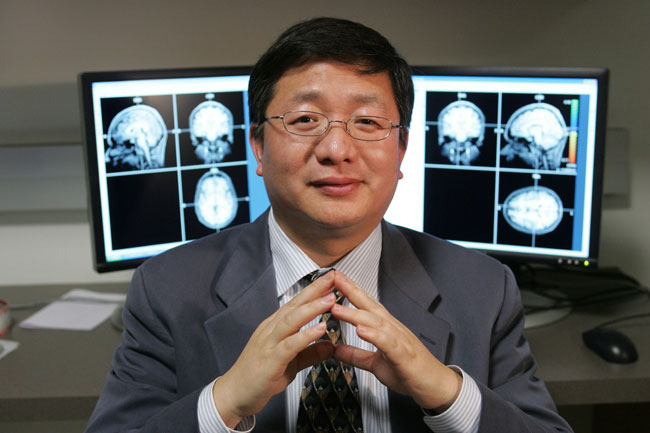'Breaking' Curveballs Are Part Illusion

The answer to the question of whose curveball breaks harder — that of the Yankees' A.J. Burnett or the Phillies' Cole Hamels — may be neither. Zhong-Lin Lu, professor of cognitive neuroscience at USC, along with colleagues from USC and American University, developed a simple visual demo that suggests a curveball's break is, at least in part, a trick of the eye. Their demo won the Best Visual Illusion of the Year prize at the Vision Sciences meeting earlier this year. Try it here. A related press release is here. The curveball's effect is due to batters being forced to switch between peripheral vision and central vision during a swing. For more on the research, see Lu's Web page. For more on Lu, read his responses to the ScienceLives 10 Questions below.
{{ video="http://www.livescience.com/common/media/video/player.php?videoRef=LS_090513_Curveball_Illusion" title="Jerky Curveball: It's All An Illusion" caption="Look at the spinning ball directly. It seems to fly straight." }}
Name: Zhong-Lin Lu Age: 42 Institution: University of Southern California Field of Study: Perception and Cognition.
What inspired you to choose this field of study? A deep curiosity for how the human brain and mind work.
What is the best piece of advice you ever received? Always push the limit in research, and try to do better and be better.
What was your first scientific experiment as a child? Demonstrating how plants take up water and minerals from their roots through xylem.
What is your favorite thing about being a researcher? Most of the time, I am having fun learning and doing new things.
Get the world’s most fascinating discoveries delivered straight to your inbox.
What is the most important characteristic a researcher must demonstrate in order to be an effective researcher? Profound curiosity and persistence.
What are the societal benefits of your research? Basic research in my laboratory has led to a theoretical framework that has been applied in a number of clinical research programs on special populations, including people with amblyopic, low vision, and dyslexic conditions. We are also actively developing quick methods to assess visual function in clinical settings and training procedures for remediation of perceptual function in amblyopia.
Who has had the most influence on your thinking as a researcher? George Sperling, my postdoctoral mentor at the University of California, Irvine.
What about your field or being a researcher do you think would surprise people the most? That I can't read palms or perform psychoanalysis.
If you could only rescue one thing from your burning office or lab, what would it be? Data.
What music do you play most often in your lab or car? The Wave.


